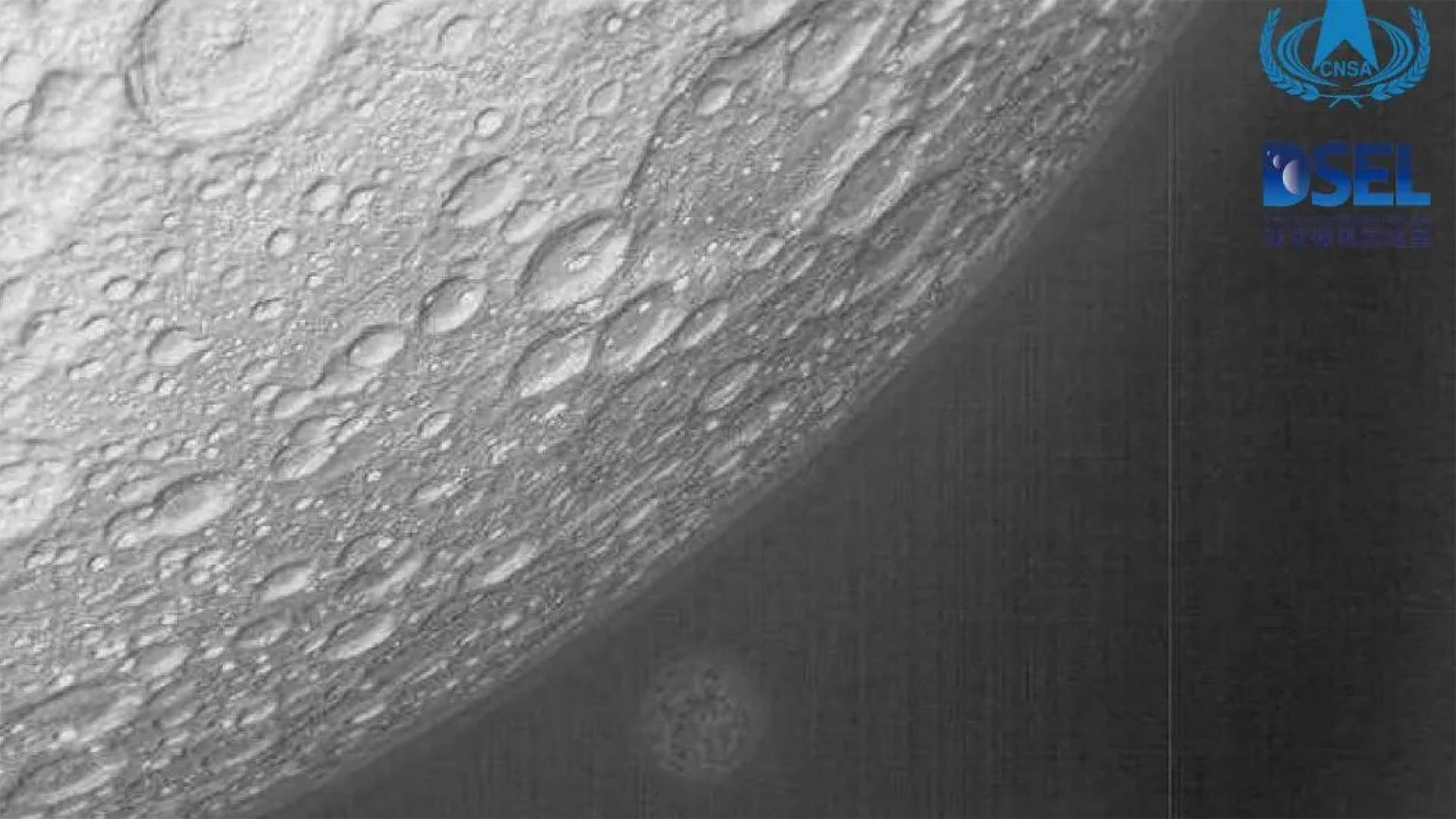Haunting photo of Earth and moon snapped by China's experimental lunar satellites
China's experimental moon satellites Tiandu-1 and 2 are testing lunar communications and navigation tech. Recently, they shared this image of the lunar surface with a ghostly Earth in the background.

A pair of small experimental satellites have begun tests related to future lunar communication and navigation services for China's moon ambitions.
The Tiandu-1 and Tiandu-2 satellites launched toward the moon along with the Queqiao-2 lunar communications relay satellite on a Long March 8 rocket on March 19. The latter spacecraft will support a major mission — the upcoming Chang'e 6 lunar far side sample return effort, which could launch as soon as next month —but the former are intended as a pathfinder for future lunar infrastructure.
China's Deep Space Exploration Lab (DSEL) stated on April 13 that Tiandu-1 and Tiandu-2 had carried out tests of high-reliability transmission and routing between Earth and the lunar surface.
One of the pair also transmitted an infrared image showing the heavily cratered far side of the moon, including a view of a distant planet Earth.
Related: 'Everything has changed since Apollo': Why landing on the moon is still incredibly difficult in 2024
The Tiandu pair entered lunar orbit on April 3 and are flying in formation around 124 miles (200 kilometers) apart. Tiandu-1 weighs 134 pounds (61 kilograms) and is equipped with a Ka-band dual-frequency communicator, a laser retroreflector and a space router. Tiandu-2 weighs 33 lbs (15 kg) and carries communication and navigation devices.
DSEL stated that the test satellites will conduct further lunar communication and navigation technology experiments. The results will guide the design and construction of the planned International Lunar Research Station (ILRS) and a Queqiao satellite constellation for lunar communication, navigation and remote sensing.
Sign up for the Live Science daily newsletter now
Get the world’s most fascinating discoveries delivered straight to your inbox.
Originally posted on Space.com.

Andrew is a freelance space journalist with a focus on reporting on China's rapidly growing space sector. He began writing for Live Science sister site Space.com in 2019, and he also writes for SpaceNews, IEEE Spectrum, National Geographic, Sky & Telescope, New Scientist and others. Andrew first caught the space bug when, as a youngster, he saw Voyager images of other worlds in our solar system for the first time. Away from space, Andrew enjoys trail running in the forests of Finland.










